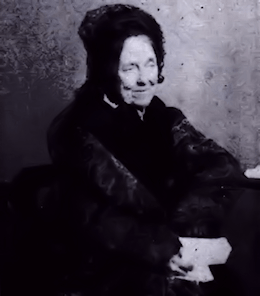Textus Receptus Bibles
Julia E. Smith Translation 1876
| 3:1 | Begin we again to recommend ourselves or need we not, as some; recommendatory epistles to you, or recommendatory from you? |
| 3:2 | Ye are our epistle written in our hearts, known and acknowledged by all men: |
| 3:3 | Made manifest that ye are the epistle of Christ served by us, not written with ink, but with the Spirit of the living God; not in tables made of stone, but in fleshly tables of the heart. |
| 3:4 | And we have such confidence through Christ to God: |
| 3:5 | Not that we are sufficient of ourselves to reckon anything as of ourselves; but our sufficiency of God; |
| 3:6 | Who rendered as fitting servants of the new covenant; not of the letter, but of the Spirit: for the letter kills, and the Spirit makes alive. |
| 3:7 | And if the service of death, in letters imprinted in stones, was in glory, so that the sons of Israel could not look intently to the face of Moses for the glory of his face; being left unemployed |
| 3:8 | How shall not rather the service of the Spirit be in glory? |
| 3:9 | For if the service of condemnation glory, much more the service of justice abounds in glory. |
| 3:10 | For also that having been glorified has not been glorified in this part, for sake of the glory excelling. |
| 3:11 | For if that left unemployed by glory, much more that remaining in glory. |
| 3:12 | Therefore having such hope, we use much freedom of speech: |
| 3:13 | And not as Moses put a veil upon his face, that the sons of Israel should not look intently to the end of that left unemployed: |
| 3:14 | But their minds were hardened: for until this day the same veil upon the reading of the old covenant. remains not uncovered;for in Christ it is left unemployed. |
| 3:15 | But even to this day, when Moses is read, a veil lies upon their heart |
| 3:16 | And whenever it turn to the Lord, the veil is taken away. |
| 3:17 | And the Lord is the Spirit: and where the Spirit of the Lord, there freedom. |
| 3:18 | And we all, shown as in a mirror the glory of the Lord, with the face uncovered, are transformed into the same image from glory to glory, as from the Spirit of the Lord. |

Julia E. Smith Translation 1876
The Julia Evelina Smith Parker Translation is considered the first complete translation of the Bible into English by a woman. The Bible was titled The Holy Bible: Containing the Old and New Testaments; Translated Literally from the Original Tongues, and was published in 1876.
Julia Smith, of Glastonbury, Connecticut had a working knowledge of Latin, Greek and Hebrew. Her father had been a Congregationalist minister before he became a lawyer. Having read the Bible in its original languages, she set about creating her own translation, which she completed in 1855, after a number of drafts. The work is a strictly literal rendering, always translating a Greek or Hebrew word with the same word wherever possible. Smith accomplished this work on her own in the span of eight years (1847 to 1855). She had sought out no help in the venture, even writing, "I do not see that anybody can know more about it than I do." Smith's insistence on complete literalness, plus an effort to translate each original word with the same English word, combined with an odd notion of Hebrew tenses (often translating the Hebrew imperfect tense with the English future) results in a translation that is mechanical and often nonsensical. However, such a translation if overly literal might be valuable to consult in checking the meaning of some individual verse. One notable feature of this translation was the prominent use of the Divine Name, Jehovah, throughout the Old Testament of this Bible version.
In 1876, at 84 years of age some 21 years after completing her work, she finally sought publication. The publication costs ($4,000) were personally funded by Julia and her sister Abby Smith. The 1,000 copies printed were offered for $2.50 each, but her household auction in 1884 sold about 50 remaining copies.
The translation fell into obscurity as it was for the most part too literal and lacked any flow. For example, Jer. 22:23 was given as follows: "Thou dwelling in Lebanon, building as nest in the cedars, how being compassionated in pangs coming to thee the pain as in her bringing forth." However, the translation was the only Contemporary English translation out of the original languages available to English readers until the publication of The British Revised Version in 1881-1894.(The New testament was published in 1881, the Old in 1884, and the Apocrypha in 1894.) This makes it an invaluable Bible for its period.